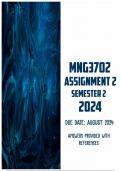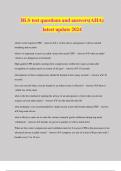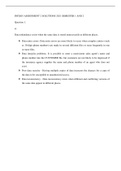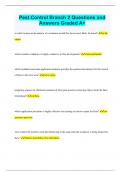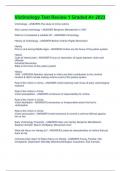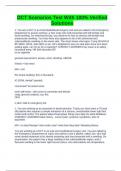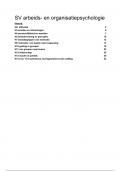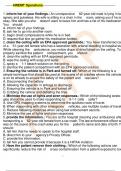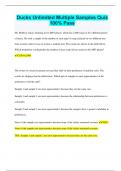Tentamen (uitwerkingen)
MNG3702 Assignment 2 Semester 2 2024 | Due August 2024
- Vak
- Instelling
- Boek
MNG3702 Assignment 2 Semester 2 2024 | Due August 2024. All questions answered with references. “Organisations will not survive over the long term without the ability to learn and adapt to changing environments.” There are various mechanisms that organisations can use, in combination, to be...
[Meer zien]
